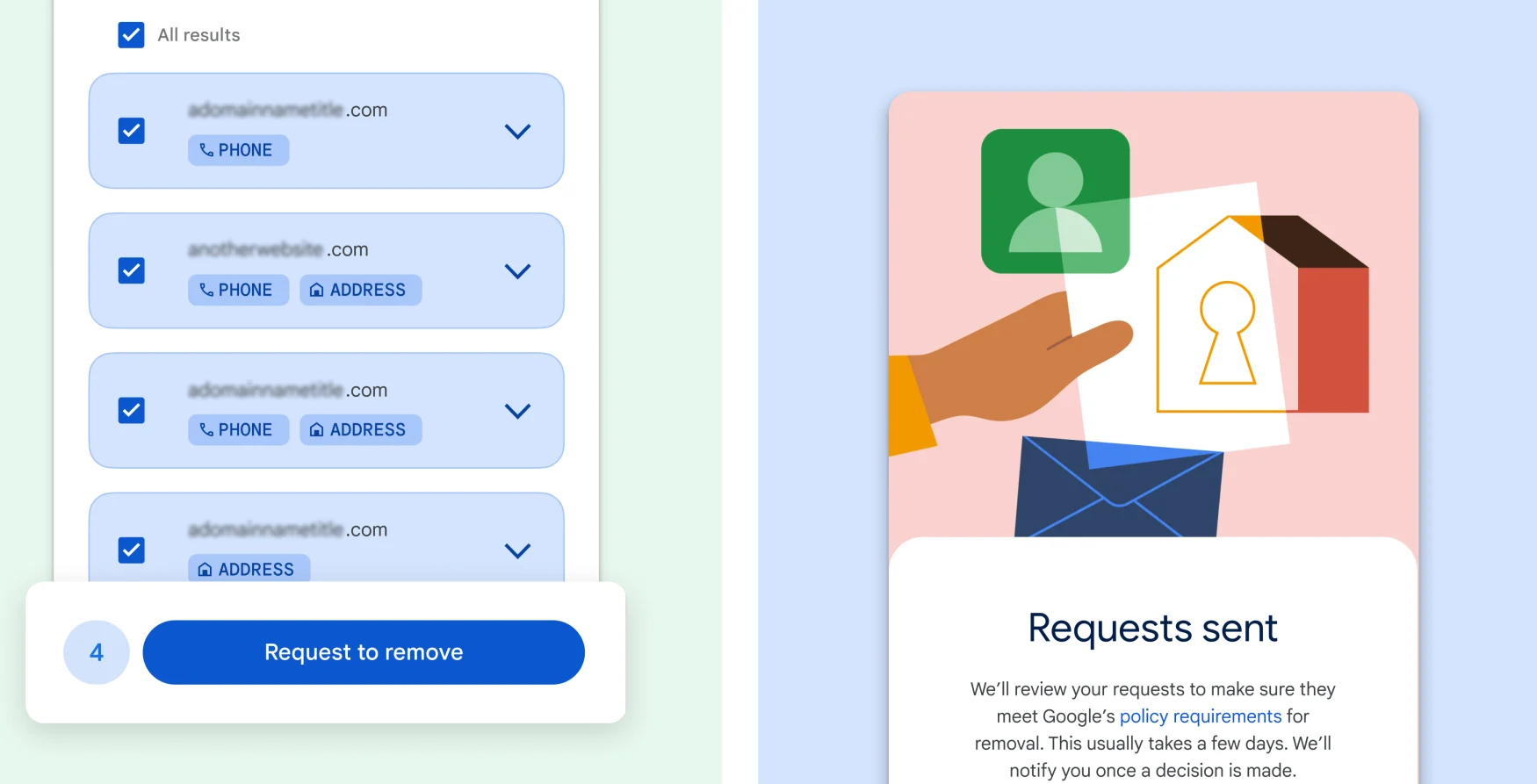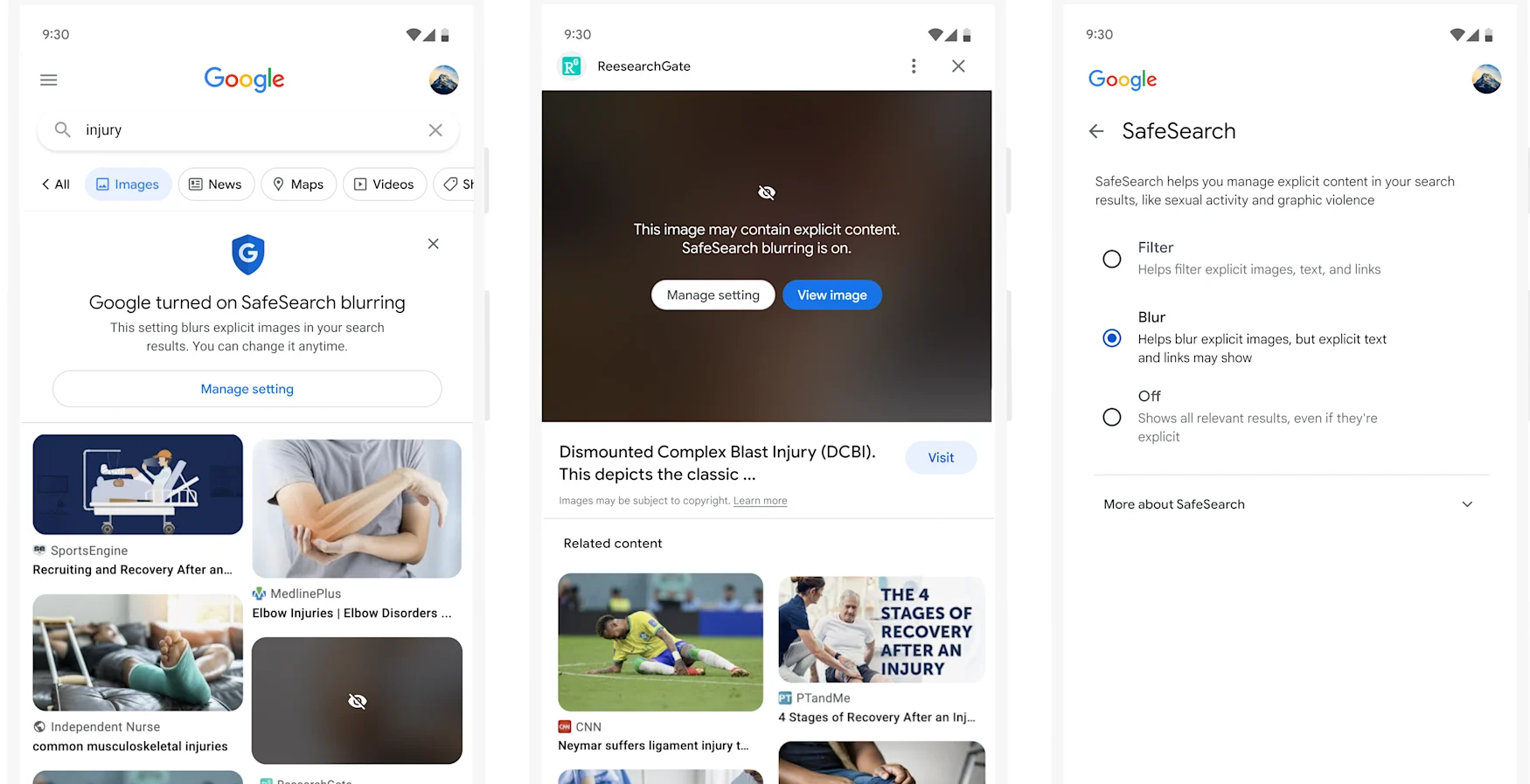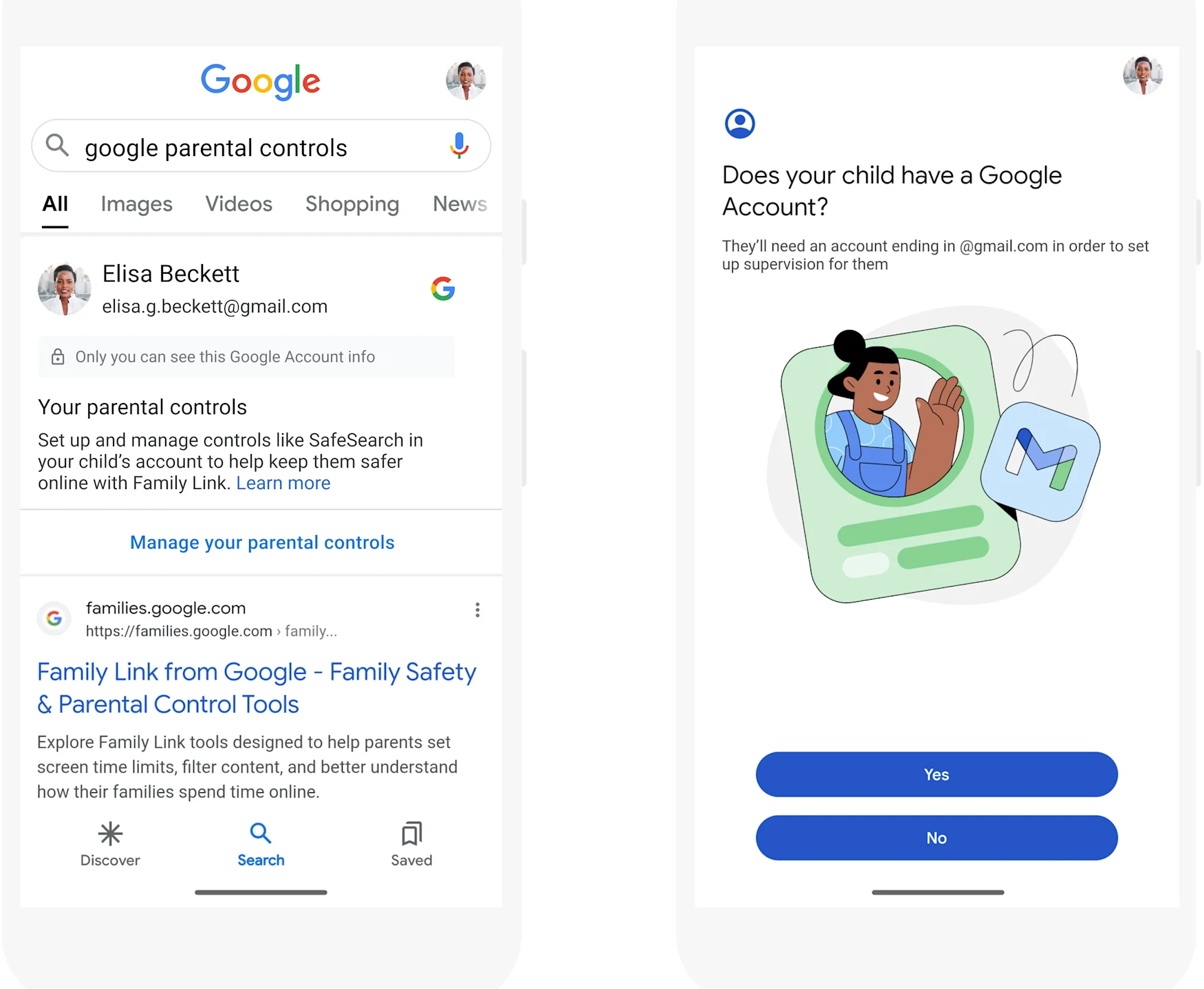The company will soon blur explicit imagery in results by default too.
Google has announced several updates to Search aimed at making it easier for people to control information about them that appears in results. The company released a tool last year to help people take down search results containing their phone number, home address or email. Now, the company has updated the “results about you” tool to make it more effective.
A new dashboard will become available in the coming days that will let you know when such personal information pops up in Search. When you get an alert, you’ll swiftly be able to ask Google to remove those results.
Earlier this year, the company debuted a Google One feature that can scour the dark web to see if your information has been included in a data breach. This “results about you” update seems to work in a similar way. The fact that it proactively finds results containing your personal info and helps you remove them should make it easier to protect your privacy.

You can access the tool from the Google app by tapping your profile photo and selecting “results about you” or from a dedicated webpage the company has set up. It’s available in the US in English for now, but Google plans to offer the tool in other languages and regions soon.
Along similar lines, Google is updating a system that aids users in taking down explicit photos of them. The company has long provided the option for people to request the removal of non-consensual explicit images from search results. It’s now expanding that policy to include consensual imagery.
Perhaps you uploaded explicit content of yourself to a website at one point, but decide you no longer want it to be available. If you delete the imagery from that website, you can now ask Google to remove it from search results if it has been published elsewhere without permission. The company notes that the policy doesn’t apply to any content you’re still commercializing.
It’s not exactly rare for owners of websites that deal in explicit imagery to report content from elsewhere. Removing such content from Google Search results won’t scrub it from the web entirely, but that may make it more difficult for people to find. You can search for “request removals” in the Google help center to get started.

On top of all that, Google is rolling out updates for parental controls and SafeSearch. Starting this month, Google is blurring explicit imagery (which it defines as adult or graphic violent content) in search results by default, a move it announced earlier this year. You’ll be able to turn off SafeSearch blurring from your settings, unless a school network admin or a guardian has locked the setting on your account.
Last but not least, it’ll now be much easier to access parental controls from Search. Punch in a query like “google parental controls” or “google family link” and you’ll see an information box that explains how to adjust the settings.
